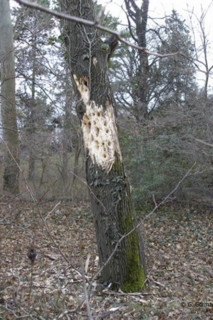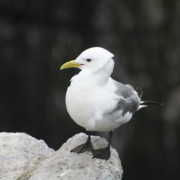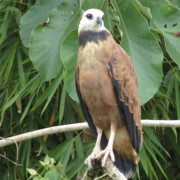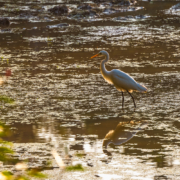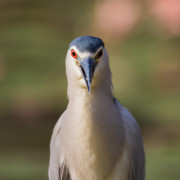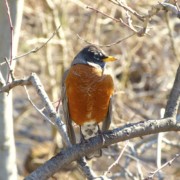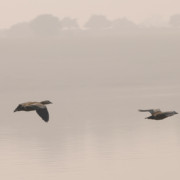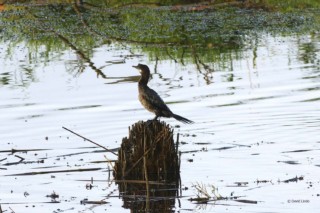My local patch is an urban one and a place that I can get to in ten minutes from home… the deciduous woods of the Buda Hills. Walking here on a weekday amongst the large beech and oak trees, I often feel that I am away in the countryside but these woods are in fact within the city limits of Budapest, the busy and bustling capital of Hungary.
Common resident songbirds in the Buda Hills include Marsh and Great Tits, Tree Sparrow, Eurasian Nuthatch, Hawfinch and both Short-toed and Common Treecreepers. The latter two can be hard to separate being very similar and often the only way to be 100% sure of safely identifying them is to hear them sing as they have totally different songs. Sometimes, when walking in the Buda Hills parties of Long-tailed Tits suddenly appear most with all white heads, unlike those in Britain. In spring and summer Collared Flycatchers and the odd Nightingale and Common Redstart sing here too and Yellowhammers perch from the tops of bushes in scrubby areas that are regenerating. This often surprises birders from the UK who usually regard these buntings as farmland birds.
Tawny Owl and Stock Dove also breed in these woods, the latter often nesting in Black Woodpecker holes. And indeed, ultimately, it is the woodpeckers that consistently draw me back. Seven species of woodpecker are resident here living side by side but each with their own niche and on a good day, armed with a knowledge of their calls and a little luck, all can be seen. Lesser, Great Spotted, Middle Spotted, Green, Grey-headed and Black Woodpeckers are resident in the woods proper and Syrian Woodpecker are usually found in the nearby gardens rather than deep in the woodland proper. My favourite areas lie off the road from Normafa to Janos-hegy (Janos Hill), which is the highest point in Budapest. There is an old observatory building here with panoramic views of the city. It used to be topped by a massive Red Star but that, along with all the other former Communist symbols, was taken down in the early 1990s.
Away from the woods Budapest has several other fine birding spots. The city is dominated by the River Danube that for most of the year is not particularly good for birds, though there are usually some gulls and cormorants about. But in autumn and winter comes into its own. My favourite spots from which to scan the river in these seasons lie in the north by Arpad Bridge (Arpad-hid) and on Obuda Island (Obuda-sziget). Common Pochard, Goosander, Red-breasted Merganser, Velvet and Common Scoters, Goldeneye and Smew are all regularly seen on the river here. Black-throated and Red-throated Divers also use the river on passage and there are sometimes a few Caspian Gull amongst the more regular Yellow-legged Gulls. The larger Margaret Island (Margit-sziget) is a recreational area and best birded on a weekday as it can be very busy at the weekends. Most of Budapest’s typical urban birds such as European Serin, Hawfinch and Black Redstart are here and in winter flocks of Bohemian Waxwing, Eurasian Siskin and Common Crossbill often drop in. By the way, it’s worth noting that both Syrian and Great Spotted Woodpeckers are found in Budapest’s parks.
Some years ago after realising just how good the birding in Budapest can be, I decided to offer one day and half-day bird finding trips for visitors in and around Hungary’s beautiful capital. And over the years many birders over in Hungary on business or attending conferences have taken advantage of this service with the number one target often being one of my favourite birds… Black Woodpecker!


